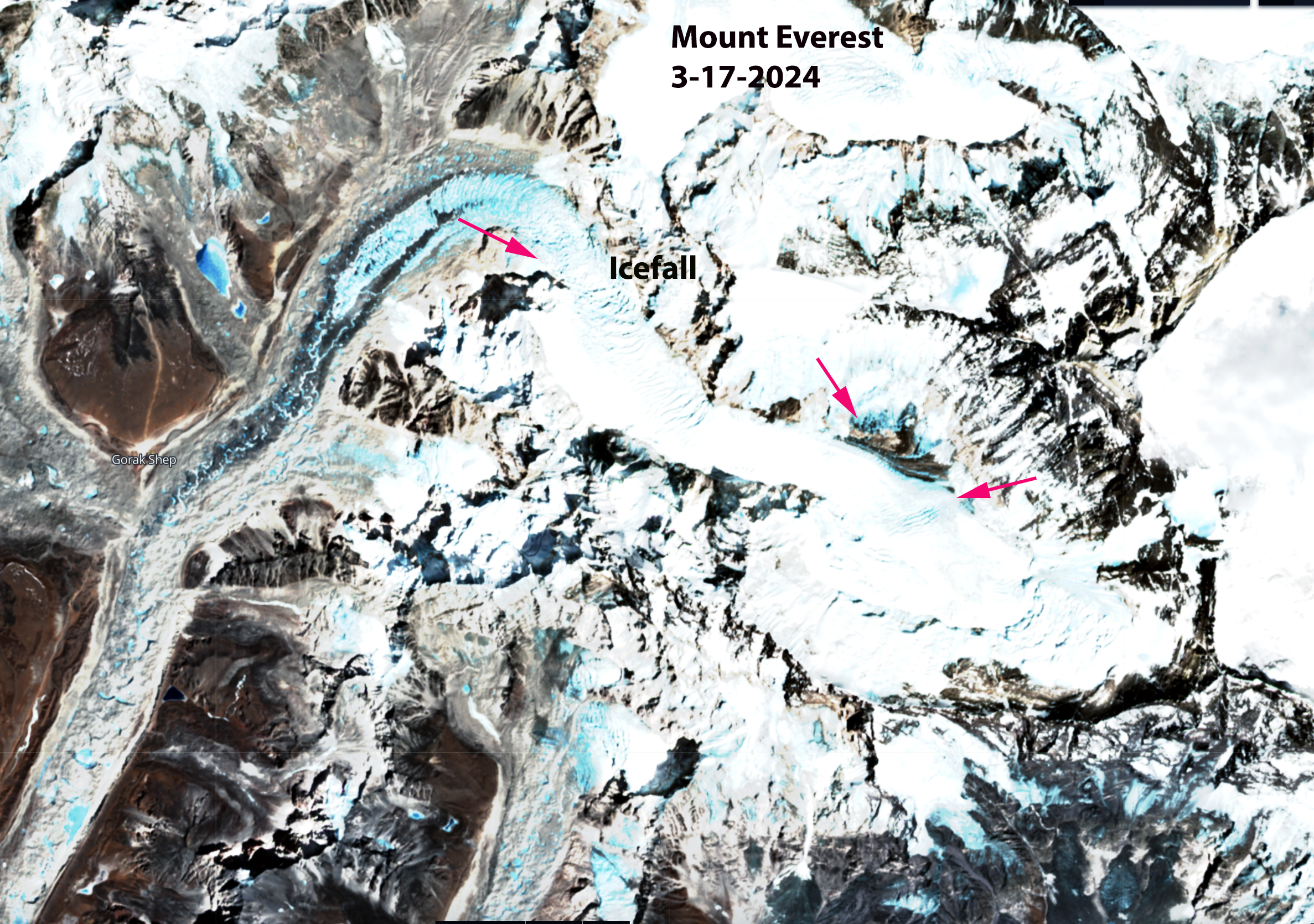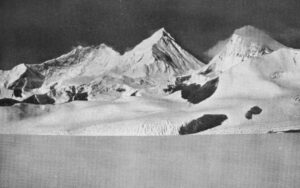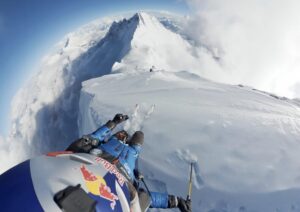Winds in the Himalaya are slowly dying down as predicted, prompting climbers to head up to higher camps. Some may even try to scoop a summit this weekend. On Everest, some tough no-O2 climbers endured the windy spell in Camp 2 and now are facing sections of hard, blue ice on the Lhotse Face.
All go for Tibet
Good news from would-be Everest North Side climbers: permits are finally in hand.
“We’re on our way to China and will cross the border to Tibet on May 7,” Adrian Ballinger of Alpenglow Expeditions wrote.
This is a relief for the few expeditions determined to climb Everest from its Tibetan side. Permits and visas have been uncharacteristically delayed.
South Side icier than ever
No-O2 climbers Hugo Ayaviri, Valery Babanov, and Norrdine Nauar are moving from Camp 2 to Camp 3 and reporting (literally) hard conditions.
“The Lhotse Face has mostly hard blue ice and almost no snow,” Nouar reported over his satellite phone.
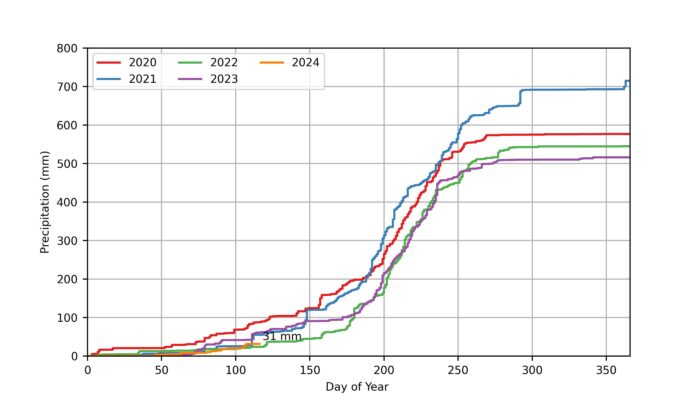
Everest weather stations show precipitation on Mount Everest over the last few years. Snowfall in the autumn of 2023 and the winter of 2023-24 was very low. Graphic: @EVER_WEATHER
Nauar plans just one rotation to Camp 4 and then will remain in Camp 2 until a summit window opens. Ayaviri will tag Camp 4, then return to Base Camp. Brazilian Moeses Fiamoncini has recently joined the no-O2 group to do Everest-Lhotse. He has partnered with Dario Libano, who will go with oxygen and two sherpas. They are now in Camp 1.
The current conditions on Everest and other Nepalese 8,000’ers like Makalu are a result of drier winters. This has led to open crevasses, hard ice sections on glaciers, and long sections of rock, where crampons slip and the usual snow anchors won’t work for fixing ropes. High-altitude workers and local authorities shared their concerns about the recent lack of snow and the harder conditions in an article on BBC Nepal.
Avalanche delays Pumori summit push
Meanwhile, on “Everest’s daughter,” as Mt. Pumori is known, Americans Tyler Andrews and Chris Fisher are ready for a speed push to the summit. They are just waiting for Asian Trekking’s sherpas to finish fixing the ropes. Before the winds came earlier this week, they had fixed the hardest parts of the route and reached the shoulder.
The original plan was for the rope fixers and one client to summit today, followed by the American ultra-runners tomorrow. However, today’s summit team discovered that a small avalanche had swept away some of the ropes between 6,600 and 6,800m.
“They had to retreat to base camp and get more gear to replace the damaged sections,” Andrews told ExplorersWeb from Base Camp. “At this point, we have delayed plans and will wait for the route to be ready. We might try to do the FKT (fastest known time) next week.”
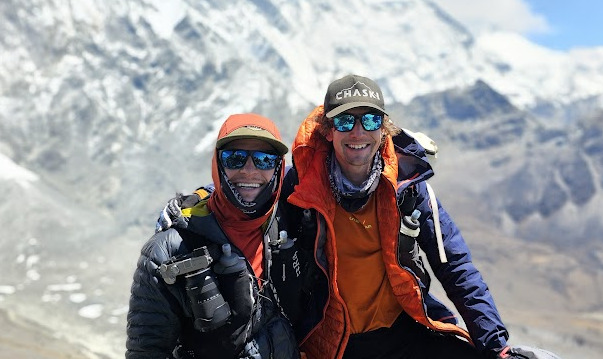
Chris Fisher and Tyler Andrews will attempt FKTs on Pumori and Lhotse. Photo: Tyler Andrews
Andrews and Fisher also plan to attempt an FKT on Lhotse, where they have already been at Camp 2 earlier this week. It took them 4 hours and 15 minutes from Base Camp.
“After a one-hour break to warm up and refuel at Camp 2, we went a few hundred meters higher to the bottom of the Lhotse Face,” Andrews reported. “There is a bergschrund you have to cross to get onto the face, and there were about 15 people on it. After waiting for 30-ish minutes, our feet got too cold in trail running shoes. We decided to head down to Camp 2 for the rest of the day.”
Female Everest FKT ahead
Meanwhile, Phunjo Jhangmu Lama will attempt the fastest female Everest ascent, Everest Chronicle reports. She already broke a record in 2018 by climbing the mountain in 39 hours and 6 minutes. Ada Tsang Yin-hung of Hong Kong surpassed that three years later, summiting in 25 hours and 50 minutes, according to The Himalayan Database. Phunjo Lama, from Ghorka region, is a professional long-line rescuer. Both she and Yin-hung used supplementary oxygen.
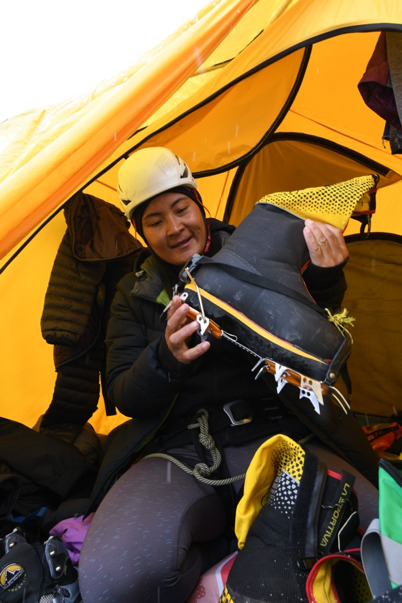
Phunjo Jhangmu Lama. Photo: Tsum Valley Homestay
